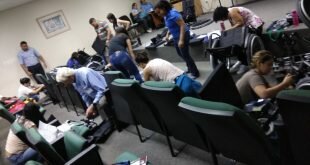South, Southeast and Midwest regions will adopt daylight saving time in 2017/2018.
This Sunday (5), at 0:00 a.m., the clocks will be advanced by one hour. A tradition since 1985, Daylight Saving Time will be in effect until February 2018 in the South, Southeast and Center-West regions.
Used by many countries in the world, daylight saving time was created to avoid an overload of the electrical system. Currently, even with the longer days, the use of electricity during this period is close to neutral.
However, the traditional practice is part of the taste of part of Brazilians. Furthermore, some economic sectors, such as retail and sports, benefit from a prolonged period of natural light.
This is the case of advertising executive Hugo Moreira, 23, partner of a sunglasses company. "I like daylight saving time. The first reason is for business. We sell sunglasses and, with an extra hour of sunlight, consumers tend to buy more of the product," he says. "We see a movement towards buying," he adds.
For him, an extra hour of sunlight also pleases at the end of his workday, when he can take advantage of the extra hour to do other activities. "I take advantage of it to do sports and enjoy the rest of the day more. It doesn't give you the feeling that you had an incomplete day when you leave the office after a day of work," he explains.
In the case of student Gabriel Freire, 23, daylight saving time can bother those who have a routine that starts earlier. "I wake up very early because of my studies and it is still dark. As I have more time to exercise in the morning, daylight saving time gets in the way a little", he says.
More important than saving energy during peak hours, Freire warns that economy measures during daily life, such as avoiding turning off electronic devices at bedtime, can be more effective than taking advantage of an extra hour of natural light.
Conscious use
Last year, daylight saving time generated savings of R$ 159.5 million, according to the National Electric System Operator (ONS). This value exceeded the initial estimates, which pointed to a saving of R$147.5 million.
The period, which lasted a total of 126 days, generated qualitative gains in relation to the reduction of consumption in the night peak hours, reducing the loads on the transmission system and increasing the security of customer service.
 Agile Manaus tourism and culture of Amazonas
Agile Manaus tourism and culture of Amazonas



